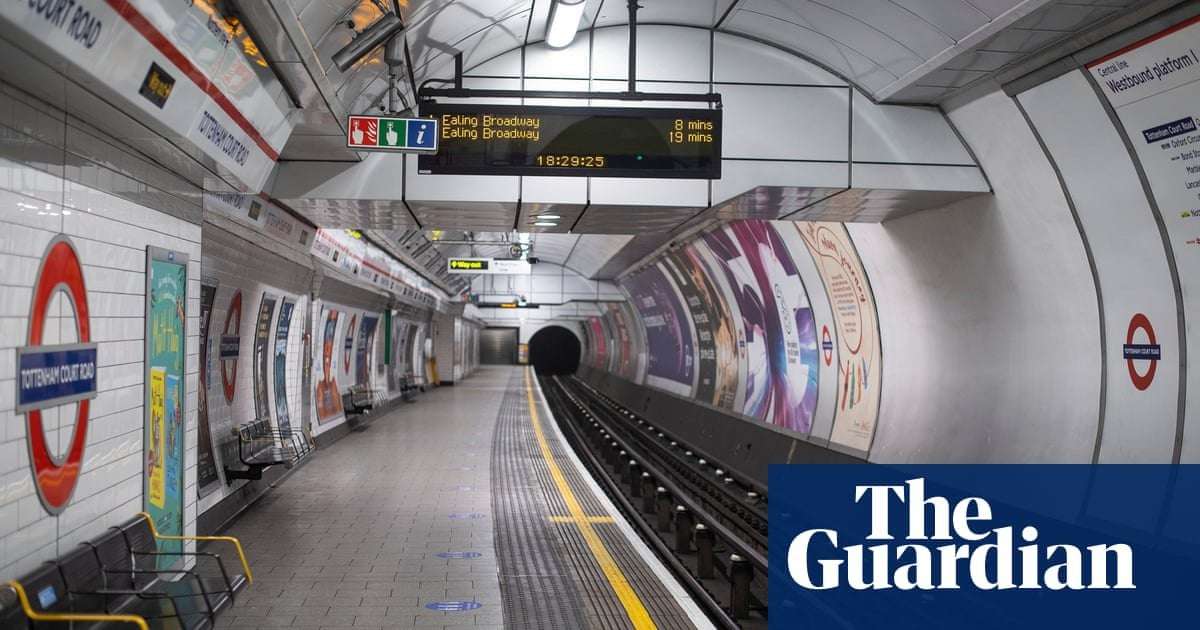An unprecedented wave of silence spread around the world in the wake of the coronavirus pandemic, according to researchers who found that vibrations from human activity slumped under national lockdowns.
Records from seismic stations all over the planet show that high frequency noise caused by industrial plants, traffic and other activities fell as much as 50% as country after country imposed restrictions that grounded planes, emptied roads and brought down the shutters on shops and businesses.
Play Video 0:38 Graphic shows how world went quiet during coronavirus lockdowns – video
“You can almost see it as a wave,” said Stephen Hicks, a seismologist who worked on the study at Imperial College, London. “You can see the seismic quietening spread over time, starting in China in late January and then moving on to Italy and beyond in March and April.”
The scientists analysed traces from a network of 268 seismic sensors in 117 countries and found substantial falls in human-generated noise in 185 of them. The largest drops were seen in busy urban centres such as New York and Singapore, but even remote stations in Germany’s Black Forest and in Rundu, Namibia, fell quieter as human activity was curtailed.
Around universities and schools in the UK and US, seismic vibrations fell around 20% more than the usual drops seen during holidays. In Barbados, high frequency noise fell by 50% in the weeks before lockdown, as flights dried up and tourists already on the island took the final few flights back home.
“The quietening is unprecedented, at least as far as we can go back in time with continuous seismic data,” said Thomas Lecocq, first author on the study at the Royal Observatory in Belgium. Digital records of seismic activity exist from the 1970s, but paper records go back further.
The findings, reported in Science, reveal that vibrations from human activity spread further than scientists expected, reaching seismometers in remote outposts or installed deep underground. “We normally try to put seismometers in quiet places, but this shows that it’s hard to get away from the noise,” said Hicks.
For researchers, the sudden global quietening presents an unexpected opportunity. As the global population grows and cities swell, more people are at risk from earthquakes, volcanoes and landslides driven by the geology that lies beneath them. Human activity increasingly masks the weak seismic waves that indicate slippage on geological fault lines, or early rumblings in a volcano, but during lockdown, such signals are easier to spot.
“It’s important to see those small signals because it tells you if a geological fault, for example, is releasing its stress in lots of small earthquakes or if it’s silent and the stress is building up over the longer term,” said Hicks. “It tells you how the fault is behaving.”
Without the human hum to overwhelm them, seismologists can more easily spot “micro-earthquakes” driven by incremental slippage along geological faults. Once they have recorded a quake from a particular fault, they can use the “fingerprint” of the tremor to look back over archived records and see if the fault has slipped before. The same goes for monitoring volcanoes near urban centres.
“In cities with geological hazards, such as earthquakes, volcanoes and landslides, we want to monitor and maybe get a warning of what’s going on. But with human noise increasing, it’ll become increasingly hard to see those small signals,” Hicks said. “We’re hoping this will spawn a whole new set of studies in this new field of human noise.”

Esc_ape_artist on July 24th, 2020 at 05:25 UTC »
Why might that be important and not just interesting?
rstlg on July 24th, 2020 at 05:20 UTC »
I’m living in Melbourne, Australia atm so still no noise as we are in lockdown still and view of the city is amazing
Steve_warsaw on July 24th, 2020 at 04:25 UTC »
It was awesome. And I’m gonna miss it.
Also, the air quality was better.
And the visibility.